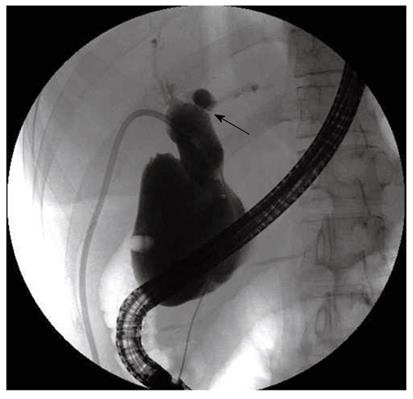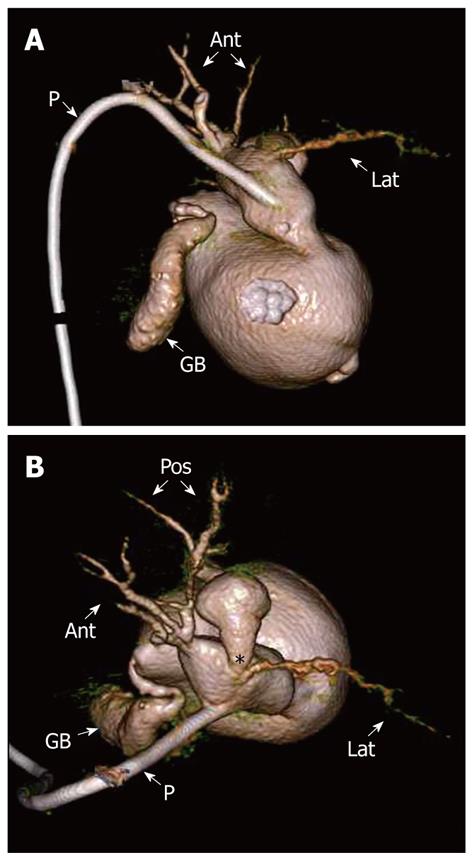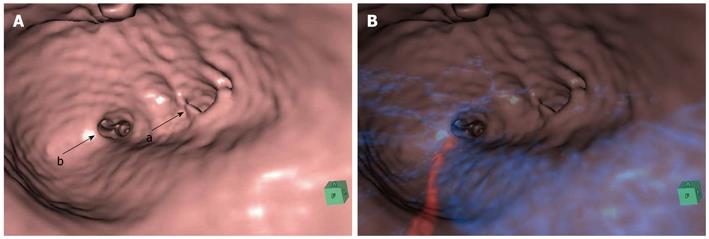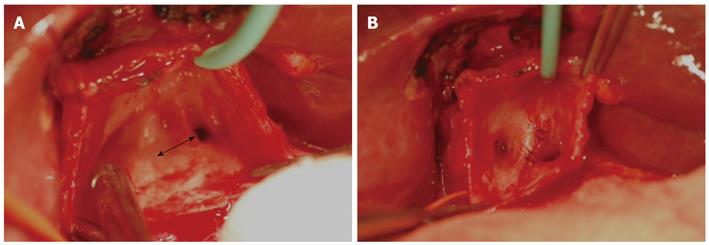Copyright
©2012 Baishideng Publishing Group Co.
World J Gastroenterol. Jul 28, 2012; 18(28): 3761-3764
Published online Jul 28, 2012. doi: 10.3748/wjg.v18.i28.3761
Published online Jul 28, 2012. doi: 10.3748/wjg.v18.i28.3761
Figure 1 Percutaneous transhepatic bile duct drainage cholangiography demonstrating a cystic dilatation of the common bile duct and relative stricture (arrow) between the extrahepatic and intrahepatic bile ducts.
Figure 2 Three-dimensional image.
A: Three-dimensional (3D) frontal image demonstrating no stricture or dilatation of the anterior and lateral branches of the bile duct; B: 3D head image showing a relative stricture (*) and partial dilatation of the posterior branch of the bile duct. P: Percutaneous transhepatic bile duct drainage tube; GB: Gallbladder; Ant: Anterior branch; Pos: Posterior branch; Lat: Lateral branch.
Figure 3 Virtual cholangioscopy.
A: Virtual cholangioscopy demonstrating a relative stricture of the orifice in the posterior branch (a) and no stricture in the anterior branch (b); B: Composite virtual cholangioscopy demonstrating no relationship between the membrane-like stricture and the surrounding blood vessels. Red indicates the hepatic artery and blue denotes the portal vein.
Figure 4 Operative findings.
A: A membrane-like stricture, which was cut along the arrow line; B: Bile duct plasty was safely performed.
- Citation: Tsuchida A, Nagakawa Y, Kasuya K, Kyo B, Ikeda T, Suzuki Y, Aoki T, Itoi T. Computed tomography virtual endoscopy with angiographic imaging for the treatment of type IV-A choledochal cyst. World J Gastroenterol 2012; 18(28): 3761-3764
- URL: https://www.wjgnet.com/1007-9327/full/v18/i28/3761.htm
- DOI: https://dx.doi.org/10.3748/wjg.v18.i28.3761












